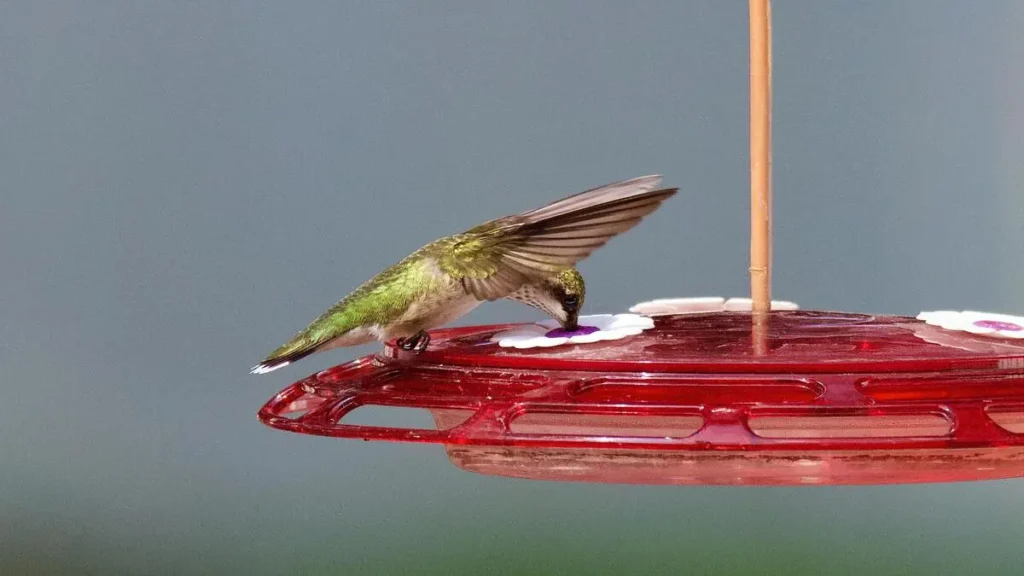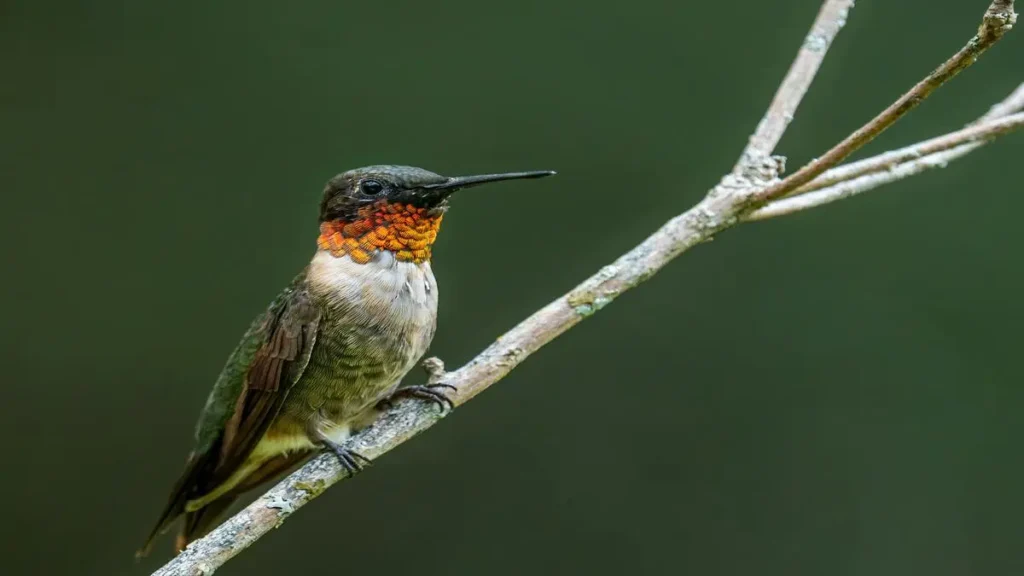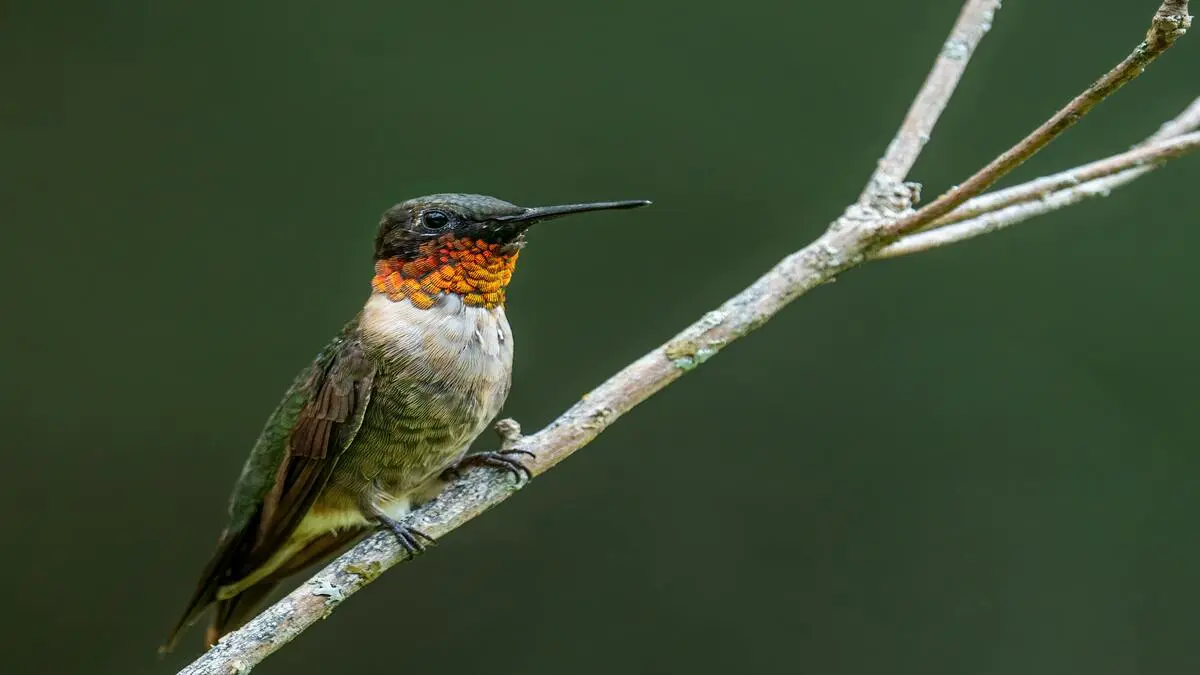Introduction
If you’re a bird lover, there’s nothing quite as magical as attracting hummingbirds to your garden. These tiny, vibrant creatures are a delight to watch as they zip through the air, sipping nectar from flowers or feeders. One of the best ways to invite hummingbirds into your yard is by offering them a homemade nectar that mimics the sugar content of flowers they naturally feed on. In this blog post, we’ll walk you through a simple hummingbird food recipe that’s easy to prepare and will keep your feathered friends coming back for more.

What is Hummingbird Nectar?
It is a sweet liquid made from sugar and water that mimics the natural nectar found in flowers. Hummingbirds rely on this sugary food source for energy, which they use to fuel their high metabolism. While you can find pre-made nectar in stores, making it at home is cost-effective and easy. Plus, it allows you to control the ingredients and avoid any harmful additives.
The Origin of Hummingbird Nectar
The practice of feeding hummingbirds with homemade nectar is rooted in the desire to provide these fascinating creatures with a reliable food source, especially during migration periods when flowers might be scarce. Hummingbirds typically feed on the nectar of flowering plants, but offering nectar in a feeder gives them a consistent source of energy, especially when natural resources are limited.
Ingredients for Homemade Hummingbird Nectar
Making your own hummingbird food is incredibly simple and requires only two basic ingredients:-
- 1 part white granulated sugar
- 4 parts water (preferably filtered or tap water, but avoid using distilled water, as it lacks necessary minerals)
Equipment You’ll Need
You don’t need many tools to make hummingbird nectar, but having a few basic items will make the process easier:-
- Measuring cup
- Saucepan (optional, for boiling)
- Mixing spoon
- Clean container or bottle (for storing the nectar)
- Hummingbird feeder (to hang the nectar outside)
Step-by-Step Guide to Preparing Hummingbird Nectar
Step 1: Boil the Water
- To start, bring 1 cup of water to a boil in a saucepan. Boiling the water helps dissolve the sugar quickly and ensures that any impurities in the water are removed. Boiling the water is not strictly necessary, but it’s a good practice, especially if you live in an area with hard water or want to ensure cleanliness.
Step 2: Add the Sugar
- Once the water reaches a boil, add 1/4 cup of white granulated sugar to the water. Stir the mixture until the sugar is fully dissolved. This creates a syrupy consistency that mimics the natural nectar of flowers. Be sure to avoid using any other types of sugar (like honey or brown sugar).
Step 3: Let the Nectar Cool
- After the sugar has dissolved, remove the mixture from the heat and allow it to cool to room temperature. Never serve hot nectar to hummingbirds, as it can burn them or cause harm. Let the nectar cool completely before adding it to your hummingbird feeder.
Step 4: Fill Your Feeder
- Once the nectar has cooled, carefully pour it into your clean hummingbird feeder. Be sure not to overfill the feeder, as this can cause the nectar to spill and attract unwanted pests.
Step 5: Hang the Feeder
- Hang your hummingbird feeder in a location where you can easily watch the birds feed. Ideally, it should be placed in a shaded area to prevent the nectar from spoiling too quickly in the sun. You should also place it near flowers or plants that may attract hummingbirds.
Health Benefits of Feeding Hummingbirds
While providing food for hummingbirds may seem like a purely selfish act (wanting to see beautiful birds), it actually plays an important role in supporting their health, especially during migration or when natural resources are limited.
- Boosts Energy: They have high metabolisms and need a steady source of energy. The sugar water you provide helps fuel their rapid wing beats and active lifestyles.
- Supports Migration: Hummingbirds travel long distances during migration, often across great stretches of land with few flowering plants. By offering food in the form of nectar, you help them build up the energy reserves they need to complete their journey.
- Keeps Them Healthy: Offering a consistent, clean source of nectar ensures the hummingbirds don’t need to rely on polluted or contaminated sources of sugar, which can be harmful.
Additional Information on Hummingbird Food
- Don’t Use Red Dye: While some commercial hummingbird nectars contain artificial red dye, it is unnecessary and may even harm the birds. The natural red color of the feeder will attract hummingbirds just fine.
- Clean Your Feeder Regularly: Nectar can spoil quickly, especially in warmer weather. Clean your feeder thoroughly every few days, and replace the nectar with fresh batches to prevent mold or bacteria from growing.
- Avoid Honey: While honey is a natural sweetener, it can ferment and cause harmful bacteria growth. Stick to using plain white granulated sugar.
Best Way to Serve
The best way to serve this bird food is by using a hummingbird feeder designed for their small beaks. These feeders typically have small openings or perches that allow the birds to sip the nectar comfortably. When placing the feeder, ensure that it’s hanging in an area where the birds can safely hover and feed without the risk of predators.
Additionally, keep the feeder clean and fill it with fresh nectar regularly to keep the birds coming back for more.
Nutritional Information
- Calories: While hummingbirds don’t consume nectar in terms of calories like humans do, the sugar content provides them with the energy they need. A typical batch of nectar (1 part sugar, 4 parts water) provides approximately 20 calories per ounce.
- Sugar: The sugar content in the nectar mimics the natural sugars found in flower nectar, which is essential for the birds’ survival.
Prep Time and Cook Time

- Prep Time: 5 minutes
- Cook Time: 5 minutes (if boiling the water)
- Total Time: 10 minutes
Conclusion
Making homemade hummingbird food is a fun, easy way to attract these beautiful creatures to your yard. By offering fresh nectar, you not only enjoy the company of hummingbirds but also play a vital role in supporting their health and migration. This simple recipe ensures that you provide them with the energy they need, without any unnecessary chemicals or additives. Get your feeder ready and start enjoying the magic of this birds in your own garden!
FAQs
1. Can I use brown sugar or honey instead of white sugar?
- It’s best to avoid using brown sugar or honey. Brown sugar can contain molasses, and honey can ferment and cause harmful bacteria. Stick to plain white granulated sugar for the best results.
2. How often should I change the nectar?
- In hot weather, it’s best to change the nectar every 2-3 days to prevent mold and spoilage. In cooler weather, you can change it less frequently, but make sure it’s still fresh.
3. Do I need to add red dye to the nectar?
- No, you don’t need to add red dye to your nectar. The red color of the feeder itself is enough to attract hummingbirds.
4. Can I store leftover nectar?
- Yes, leftover nectar can be stored in the refrigerator for up to one week. Just be sure to let it come to room temperature before refilling your feeder.
